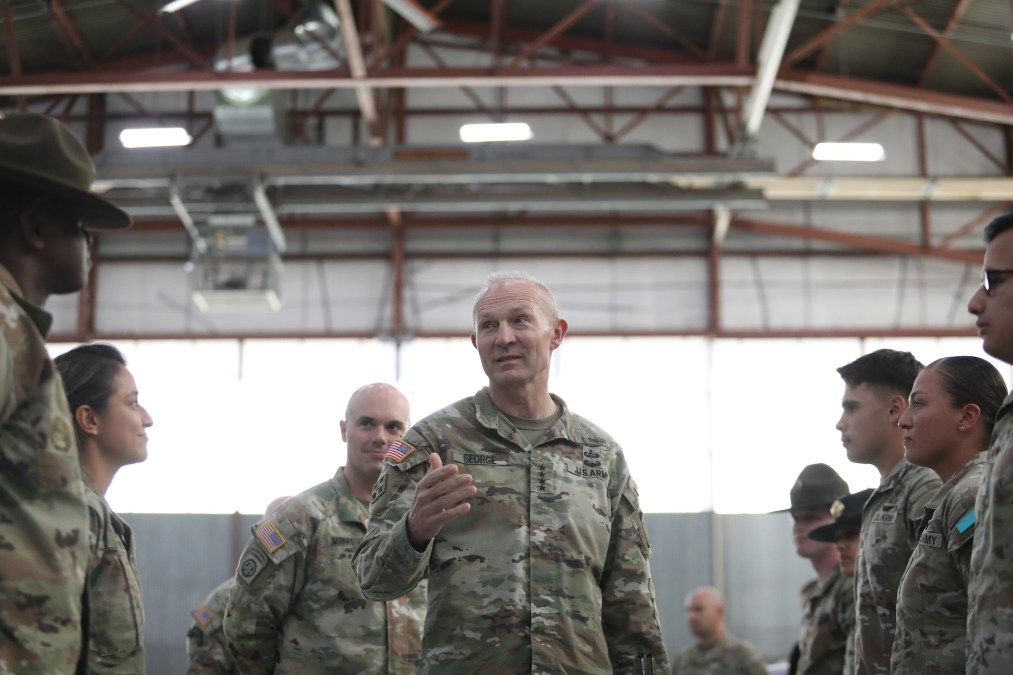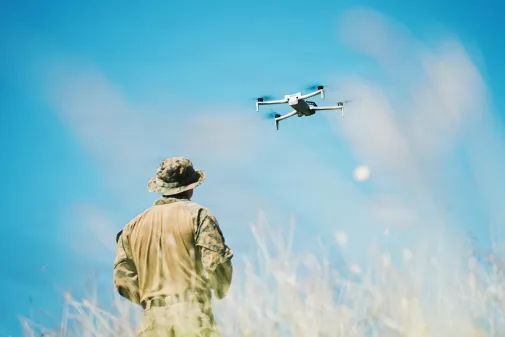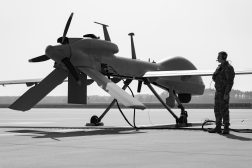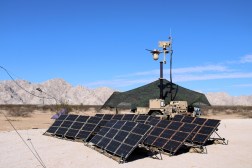Army chief of staff: We don’t need a drone branch

Boosting the Army’s drone and counter-drone capability and capacity is a priority for the service’s top officer. However, he told lawmakers that he’s opposed to creating a separate drone branch to accomplish that goal.
Members of a House Armed Services subcommittee are proposing that the Army establish a Drone Corps, and it included a provision in its mark for the fiscal 2025 defense policy bill that would mandate its creation.
“For us, this is a capability that’s going to be, I think, resident in every formation at every echelon. So … we see this as integrated into our formation, not some separate piece. And I think we need that kind of flexibility. We’re actually doing that right now with our formations … We selected three units to kind of work this out and start to transform in contact and doing this. But I don’t think it would be helpful to have a separate drone branch,” Gen. Randy George said Tuesday during a Senate Armed Services Subcommittee on Defense hearing.
George isn’t the only senior Army leader to throw cold water on the idea of a Drone Corps. Last week, Undersecretary Gabe Camarillo also suggested it would be counterproductive.
The service is rebalancing its aviation portfolio and pursuing next-generation drones. That includes a so-called Launched Effects family of systems and future tactical unmanned aircraft systems.
UAS, counter-drone weapons and electronic warfare tools are also key elements of George’s “transforming in contact” concept.
The Army is looking across the industrial base at technologies that are out there, with an eye toward having flexibility with platforms, payloads and other components.
“There’s a lot of great small companies out there that are really moving quickly with unmanned systems. And what we’re trying to do is build a modular open system architecture where we can put different systems and sensors on them. And I think that we will be able to adapt to that rate of change … if we take that model,” George said.
Drones have been featured prominently in the Ukraine-Russia war and in conflicts in the Middle East in recent years, including one-way attack drones. The U.S. military is pursuing new tools to defeat those types of weapons.
When it comes to force structure growth, counter-UAS batteries are a top need for the Army, George noted.
Secretary of the Army Christine Wormuth said officials have been reassessing the total minimum requirements for munitions such as the Coyote interceptor.
“I think there’s a general recognition that, given what we’re seeing in Ukraine, that we need to increase our stockpiles of munitions and counter-UAS capabilities. So, we are working on that right now. I think Gen. George and I both believe that we need to invest more in counter-UAS capabilities, which is why you see some of that on his unfunded priority list,” Wormuth told lawmakers at Tuesday’s hearing.
The service is trying to push additional capabilities into the field to protect U.S. troops.
“We are basically taking everything that we have available and putting it in the Middle East … We actually have soldiers that are on the systems, the developers and the testers that are all right there. And we have our directed energy that’s over [there]. We just directed that high-power microwave system that we’re doing is going to go over there immediately because I think we have to spin this a whole bunch faster,” George said.
He made a pitch for lawmakers to give the Army more flexibility with funding, noting that threats and technologies evolve quickly and continuing resolutions have hampered the service’s ability to adapt quickly.
“I think flexible funding — and I know sometimes that can be a bad word — but within counter-UAS, UAS and EW portfolios would really help us. The battlefield is changing very, very rapidly, and I’m talking days and weeks — sometimes you’re lucky to get, you know, things changing in a month. But as it changes, we need to be able to, you know, go back to — we have the best industry in the world — to go back and say, ‘Hey, we need to change this, we need to up the quantity,’” George told lawmakers.
“I think we have to be more flexible in our funding approach so that when we have something that’s research is working well and we know we need to procure more of those systems … that we wouldn’t have to wait,” he added. “We could come over and notify the committee and then, you know, do a certain wait period and then go ahead and do that. And we would love to work with you on that. But I think we have to turn the wheel a lot faster on counter-UAS.”






